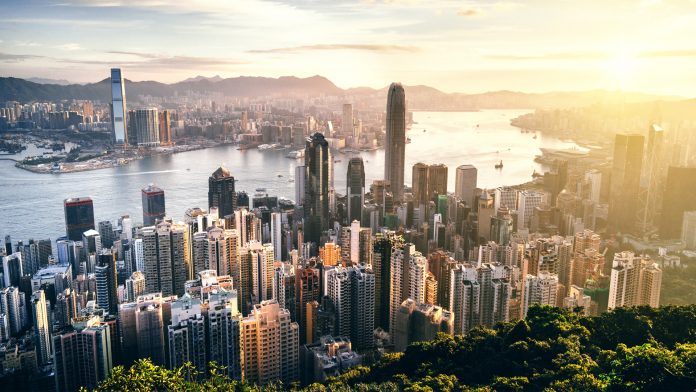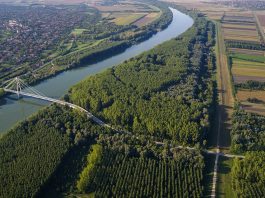Researchers are analysing novel green energy solutions to ensure the greening of cities benefits both people and nature alike.
Several cities in Europe are embracing green energy solutions to make life for residents more pleasant and sustainable – these innovative approaches serve as a model for urban environments elsewhere.
So far, the twenty-first century has seen more people from around the world moving to urban areas. In Europe alone, more than three in four people live and work in cities. Urban environments such as these have their obvious attractions, be that for professional fulfilment, social activities, and close proximity to vital services such as education and healthcare.
However, cities also have their disadvantages, including their dense concentration of people, buildings and economic activity that creates environmental challenges.
Urbanisation effects on environment
The increasing movement towards urbanisation therefore requires policymakers to confront these challenges for the long term, to make Europe’s cities more sustainable for a net-zero carbon future. In doing this, it will also make them more attractive and pleasant places to live.
In the city of the future, the notion of a concrete jungle is perhaps not so undesirable as it first sounds, in the sense that greening a city, and integrating nature-based solutions into the fabric of the built environment, could – while not exactly creating a jungle – make cities prettier, greener, more sustainable and even biodiversity-rich.
“Even in industrial times, people have always been working with nature and using all the possibilities that nature offers, for example by growing food in gardens or harvesting trees for wood as a building material,” explained Ben Delbaere, a consultant in nature-based solutions from the Netherlands. “But it’s only in the past 10 or 15 years that this has become a policy priority, as a successor to the concept of ecosystem services.
“Public authorities have now largely understood that from a sustainability perspective, our urge to keep on building and using land needed to be matched by an urge to have more nature around us.”
Nature-based solutions
Nature-based solutions in cities can be applied across all sectors, it does not have to be limited to specific zones of an urban area. “These interventions can assist to link and unite districts, which in turn strengthens community cohesion,” commented Raúl Sánchez Francés, Natural Resources and Climate Area Manager at CARTIF, a non-profit technology centre based in Valladolid, Spain, focusing on industrial innovation and competitiveness.
“No two cities are the same structurally, but most have the same climate change challenges, related to flood and droughts, the heat island effect, and poor air and water quality.”
Nature-based solutions are among the contributions comprising renaturing urban plans (RUPs) for cities, and these can vary enormously. For instance whether bringing residents closer to nature through extending parks and cycle routes, maximising climate impact through urban carbon sinks, or containing floodwater on land susceptible to inundation through ponds in which biodiversity can thrive, nature is at the forefront.
According to Sánchez, another important aspect is bringing stakeholders on board, and moving ahead with the same vision: “RUPs require an ongoing, adaptable and collaborative process that encompasses authorities, urban planners, green infrastructure technology providers, researchers and communicators.”
URBAN GreenUP
URBAN GreenUP, an EU-financed project that, for the past five years, has developed, applied and tested nature-based solutions, deployed this approach to develop a suite of integrated solutions for cities to choose from as they face increasing environmental challenges.
Valladolid, Liverpool and Izmir are the three ‘runner’ cities participating in the initiative, chosen for their geographical and topographical diversity, as well as their differing social and economic landscapes. Five follower cities include three from outside Europe, in Colombia, Vietnam and China.
Sánchez, who is also URBAN GreenUP’s coordinator, says the project’s impact across these cities has been transformational. “Through well-designed RUPs, we have succeeded in changing so many residents’ perception of their cities.
“To see them get involved in greening their environment and starting to turn their urban landscapes into bio-cities, is deeply satisfying. Focusing together on needs and gaps has generated a well-structured and effective body of work, and this is truly the project’s legacy.”
The project celebrates five years in May 2022, which is a chance for project monitor Jesús Ortuño, a Madrid-based Geographer and Remote Sensing Analyst at GMV, a global technology services company, to look back on achievements and lessons learned – some of which the pandemic amplified.
“It convinced many local authorities to accelerate urban greening, which led to a flourishing of nature-based initiatives. That put pressure on specialist contractors and supply chains, because these interventions are still, for the moment, highly innovative and specialised,” added Ortuño.
Green energy solutions to reshape urban landscapes
The occasional frustrations with the greening of urban landscapes paled by comparison to the advantages to citizens.
“The benefits are clear, whether through environmental monitoring through instruments such as air quality sensors and sound level meters, satellite-based remote sensors or whether through citizens’ appreciation of the interventions as demonstrated in their feedback and their increasingly active participation at community level,” Ortuño said.
URBAN GreenUP set out to demonstrate that it is possible for cities and nature not only to exist side by side, but to be intimately integrated with one another through the application of nature-based solutions.
The methodologies and models developed stand as a compendium of innovation, and a guide for cities in Europe and beyond to develop and finesse their own approaches to making urban more environmentally friendly.









